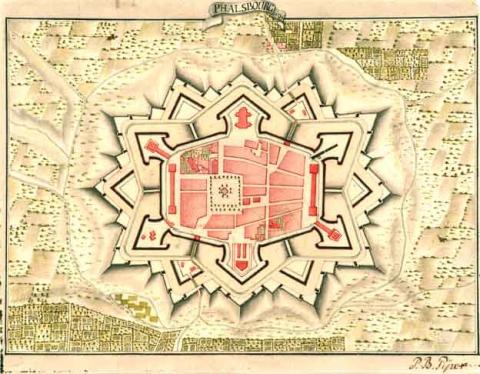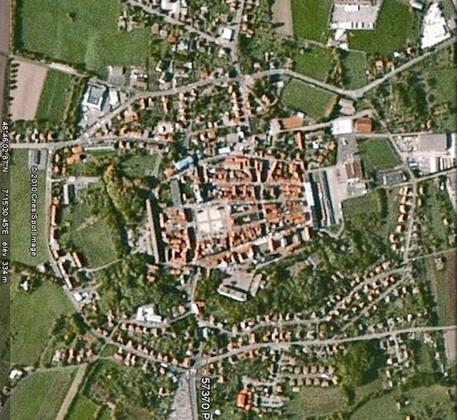Phalsbourg
History and description
Phalsbourg was founded around 1570 as a new town on a military footing by Georges-Jean de Veldenz, Count Palatine of the Rhine. It was a new town with an orthogonal plan and a central parade ground including a well. The Count Palatine had to sell it in 1583 to the Duke of Lorraine Charles III. The town was razed during the Thirty Years War, to the point where no more than thirty houses were left standing in 1650. In 1661, Duke Charles IV was compelled to cede it to Louis XIV and to cardinal Mazarin, who remained the first minister of the king.In 1679, Vauban visited Phalsbourg in the company of Louvois, the war Minister of Louis XIV. He immediately put together a project which was applied from the following year: a totally new urban wall, hexagonal in shape. It included six arrow-headed bastions, six ravelins, moats, a covered way with traverses and incoming parade grounds. Two barracks were constructed within the ramparts near two gates: the porte de France to the north-west, and the porte d’Allemagne to the south-east. Other military buildings were installed in the west and east bastions. The layout of the streets was adjusted slightly to ensure it optimally corresponded to the route of the urban wall. Vauban had specified a hornwork on the west flank as part of his projects, but this did not come to fruition.
Current state
The urban wall was demolished by the Germans after 1870. All that remains are the two western fronts, the bastions of Dauphin and of the castle (the first of which included a powder keg and the second the former castle), the two gates, the central guardroom transformed into a town hall, a barracks known as the Lobau barracks and the Château d’Einhartshausen, former seat of the founder. The ramparts are now a city park.
Phalsbourg
Phalsbourg
48° 46' 7" N, 7° 15' 33" E
Type
urban wall and town planning
Engineers
Sébastien le Prestre de Vauban
Department
Moselle
Region
Grand Est
Bibliography
- DE ROUX (A.), Villes neuves, urbanisme classique, Paris, 1997.
- GABER, Lorraine, la route des fortifications, Metz, 1999.
- MARTIN (P.), La route des fortifications dans l’Est, Paris, 2007.
- OZIOL (A.), La ville nouvelle de Vauban, un urbanisme à la gloire de Louis XIV, dans SALZMANN (J.-P.) (dir.), Vauban, militaire et économiste sous Louis XIV, t. II : Vauban et Longwy à l’époque de Louis XIV, les Guerres de Louis XIV, Luxembourg, 2009, p. 217-250, (actes du colloque organisé par la Commission Lorraine d’Histoire militaire à Longwy, les 29 et 30 septembre 2007).

